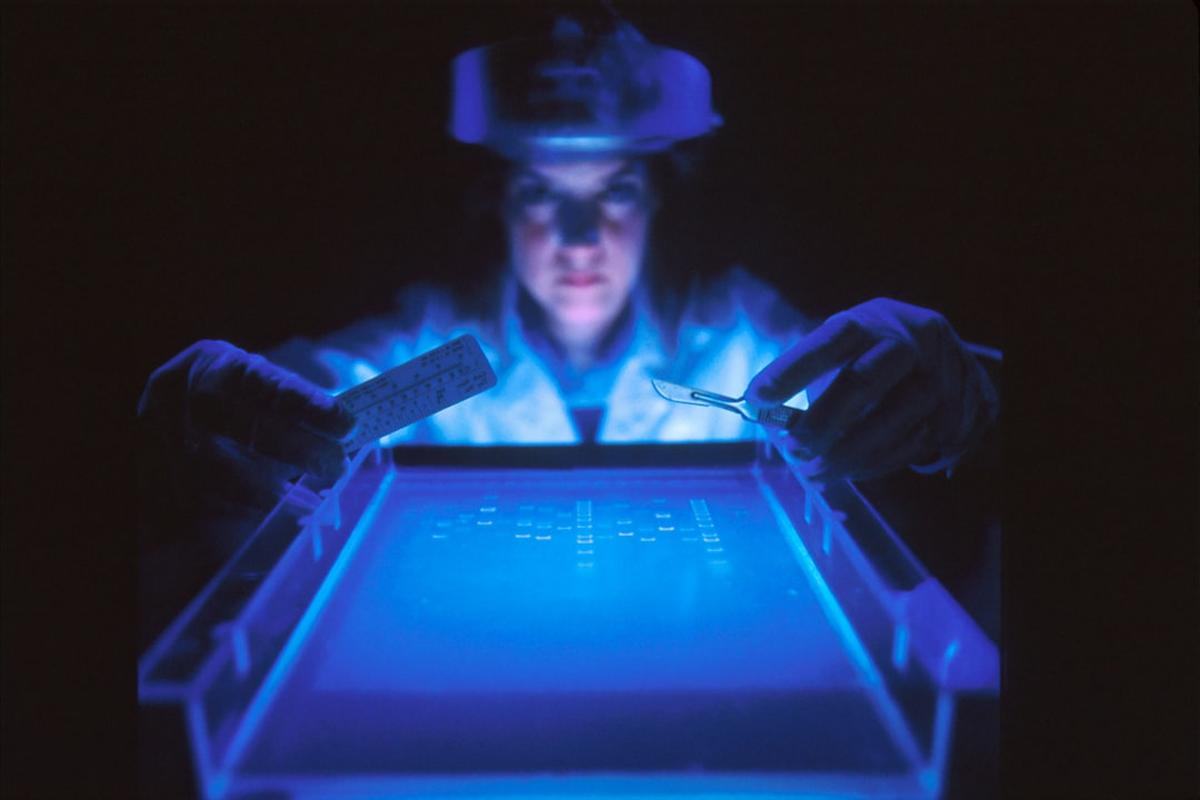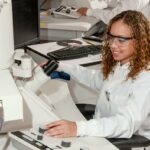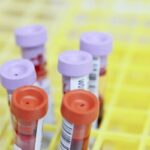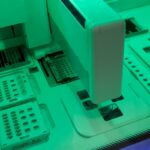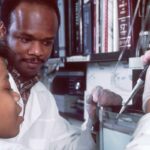The blueprint of life, the DNA (Deoxyribonucleic Acid), is a fascinating molecule that carries the genetic instructions used in the growth, development, functioning, and reproduction of all known living organisms. Understanding the dynamics of DNA change in a person is a complex and captivating area of study. It opens up a world of possibilities, from unlocking the secrets of evolution to developing personalized medicine.
Understanding the Structure of DNA
DNA is composed of two strands coiled around each other to form a double helix, with each strand made up of a long chain of nucleotides. These nucleotides are the basic building blocks of DNA, consisting of a sugar, a phosphate group, and a nitrogenous base. The sequence of these bases forms the genetic code, which determines the characteristics of an organism.
Genes and Chromosomes are integral components of DNA. Genes are segments of DNA that carry the instructions for making proteins, the workhorses of the cell. Chromosomes, on the other hand, are long, thread-like structures composed of DNA and protein, carrying hundreds or thousands of genes. Humans typically have 46 chromosomes in each cell, divided into 23 pairs.
The Process of DNA Replication
DNA replication is a critical process that ensures genetic continuity from one generation to the next. During this process, the two strands of the DNA molecule separate, and each strand serves as a template for the synthesis of a new, complementary strand. This semi-conservative replication ensures that each new cell receives an exact copy of the genetic material.
However, errors can occur during DNA replication, leading to mutations. These errors can be caused by a variety of factors, including exposure to certain chemicals or radiation, errors in DNA replication, or even random chance. While many of these mutations are harmless, some can lead to diseases like cancer.
The Phenomenon of DNA Mutation
DNA mutations are changes in the sequence of nucleotides in the DNA molecule. They can occur in many different ways, such as through the insertion or deletion of nucleotides, or through the substitution of one nucleotide for another. These mutations can have a variety of effects, depending on where they occur and how they alter the genetic code.
Mutations play a crucial role in evolution, providing the variation upon which natural selection can act. However, they can also lead to diseases when they disrupt the normal function of genes. For example, mutations in the BRCA1 or BRCA2 genes can significantly increase a woman’s risk of developing breast or ovarian cancer.
Epigenetic Changes: Beyond the Genetic Sequence
Epigenetic changes are modifications that alter gene expression without changing the underlying DNA sequence. These changes can be caused by a variety of factors, including environmental influences and lifestyle choices. They can affect a wide range of biological processes, from development to aging, and can even be passed on from one generation to the next.
There are several types of epigenetic changes, including DNA methylation, histone modification, and non-coding RNA molecules. DNA methylation, for example, typically acts to repress gene transcription, while histone modification can either enhance or repress gene expression, depending on the specific modification.
The Relationship between Epigenetic Changes and Aging
Aging is a complex process that involves a variety of biological changes, including changes in gene expression. Epigenetic modifications play a significant role in this process, influencing how genes are expressed as we age.
Research has shown that the pattern of DNA methylation changes as we age, with some areas of the genome becoming hypermethylated and others becoming hypomethylated. These changes can affect the expression of genes involved in a variety of processes, from cell growth and differentiation to inflammation and stress response.
Factors Influencing DNA and Epigenetic Changes
Both genetic and environmental factors can influence DNA and epigenetic changes. For example, exposure to certain environmental factors, such as tobacco smoke or ultraviolet radiation, can cause DNA mutations. Similarly, lifestyle choices, such as diet and exercise, can influence epigenetic changes.
Genetic predisposition can also play a role in these changes. For example, individuals with certain genetic variants may be more susceptible to DNA damage or may have a reduced capacity for DNA repair. Similarly, certain diseases, such as cancer, can cause or be caused by changes in DNA or epigenetic modifications.
The Potential for DNA Change: A Look at Current Research
Recent advances in our understanding of DNA and epigenetic changes have opened up exciting new possibilities for research and treatment. For example, scientists are now able to use CRISPR-Cas9, a revolutionary gene-editing tool, to precisely target and modify specific sequences of DNA. This has the potential to treat a wide range of genetic diseases, from cystic fibrosis to sickle cell anemia.
Similarly, research into epigenetic modifications has led to the development of new drugs that can modify the epigenetic landscape of cells, potentially treating diseases like cancer. These developments highlight the immense potential of understanding and controlling DNA change.
Implications of DNA Change for Human Health
Changes in DNA can have significant implications for human health. Mutations in DNA can lead to a variety of diseases, from cancer to genetic disorders. Similarly, epigenetic changes can influence the risk of diseases, from cardiovascular disease to mental health disorders.
Understanding these changes can also pave the way for personalized medicine, a medical model that tailors treatment to the individual patient. By understanding a patient’s unique genetic and epigenetic profile, doctors can provide more effective and targeted treatments.
In Summary
The dynamics of DNA change in a person are complex and multifaceted, involving both genetic and epigenetic modifications. Understanding these changes can provide valuable insights into the processes of evolution, aging, and disease. As our knowledge of these processes continues to grow, so too does the potential for new treatments and therapies, highlighting the importance of continued research in this fascinating field.
Frequently Asked Questions
Genes and Chromosomes
are integral components of DNA. Genes are segments of DNA that carry the instructions for making proteins, the workhorses of the cell. Chromosomes, on the other hand, are long, thread-like structures composed of DNA and protein, carrying hundreds or thousands of genes. Humans typically have 46 chromosomes in each cell, divided into 23 pairs.
What is DNA?
DNA, or Deoxyribonucleic Acid, is a molecule that carries the genetic instructions used in the growth, development, functioning, and reproduction of all known living organisms.
What is a DNA mutation?
A DNA mutation is a change in the sequence of nucleotides in the DNA molecule. These mutations can occur in many different ways and can have a variety of effects, depending on where they occur and how they alter the genetic code.
What are epigenetic changes?
Epigenetic changes are modifications that alter gene expression without changing the underlying DNA sequence. These changes can be caused by a variety of factors, including environmental influences and lifestyle choices.
How do DNA and epigenetic changes relate to aging?
Aging involves a variety of biological changes, including changes in gene expression. Epigenetic modifications play a significant role in this process, influencing how genes are expressed as we age.
What factors can influence DNA and epigenetic changes?
Both genetic and environmental factors can influence DNA and epigenetic changes. For example, exposure to certain environmental factors, such as tobacco smoke or ultraviolet radiation, can cause DNA mutations. Similarly, lifestyle choices, such as diet and exercise, can influence epigenetic changes.
What are the implications of DNA change for human health?
Changes in DNA can have significant implications for human health. Mutations in DNA can lead to a variety of diseases, from cancer to genetic disorders. Similarly, epigenetic changes can influence the risk of diseases, from cardiovascular disease to mental health disorders.
References
- Alberts, B., Johnson, A., Lewis, J., Raff, M., Roberts, K., & Walter, P. (2002). Molecular Biology of the Cell. New York: Garland Science.
- Feinberg, A. P., & Tycko, B. (2004). The history of cancer epigenetics. Nature Reviews Cancer, 4(2), 143-153.
- Horvath, S. (2013). DNA methylation age of human tissues and cell types. Genome Biology, 14(10), R115.
- Doudna, J. A., & Charpentier, E. (2014). The new frontier of genome engineering with CRISPR-Cas9. Science, 346(6213), 1258096.
- National Human Genome Research Institute. (2020). What is a gene mutation and how do mutations occur? Retrieved from https://www.genome.gov/genetics-glossary/Mutation
- National Institute of Environmental Health Sciences. (2020). Epigenetics and Human Health. Retrieved from https://www.niehs.nih.gov/health/topics/science/epigenetics/index.cfm
- National Institute on Aging. (2020). Epigenetics: How Does It Influence Aging and Longevity? Retrieved from https://www.nia.nih.gov/news/epigenetics-how-does-it-influence-aging-and-longevity
- National Cancer Institute. (2020). BRCA Mutations: Cancer Risk and Genetic Testing. Retrieved from https://www.cancer.gov/about-cancer/causes-prevention/genetics/brca-fact-sheet
- World Health Organization. (2020). Genes and human disease. Retrieved from https://www.who.int/genomics/public/geneticdiseases/en/index2.html
- Zhang, L., & Lu, Q. (2019). Epigenetics in Health and Disease. Advances in Experimental Medicine and Biology, 1166, 1-16.

